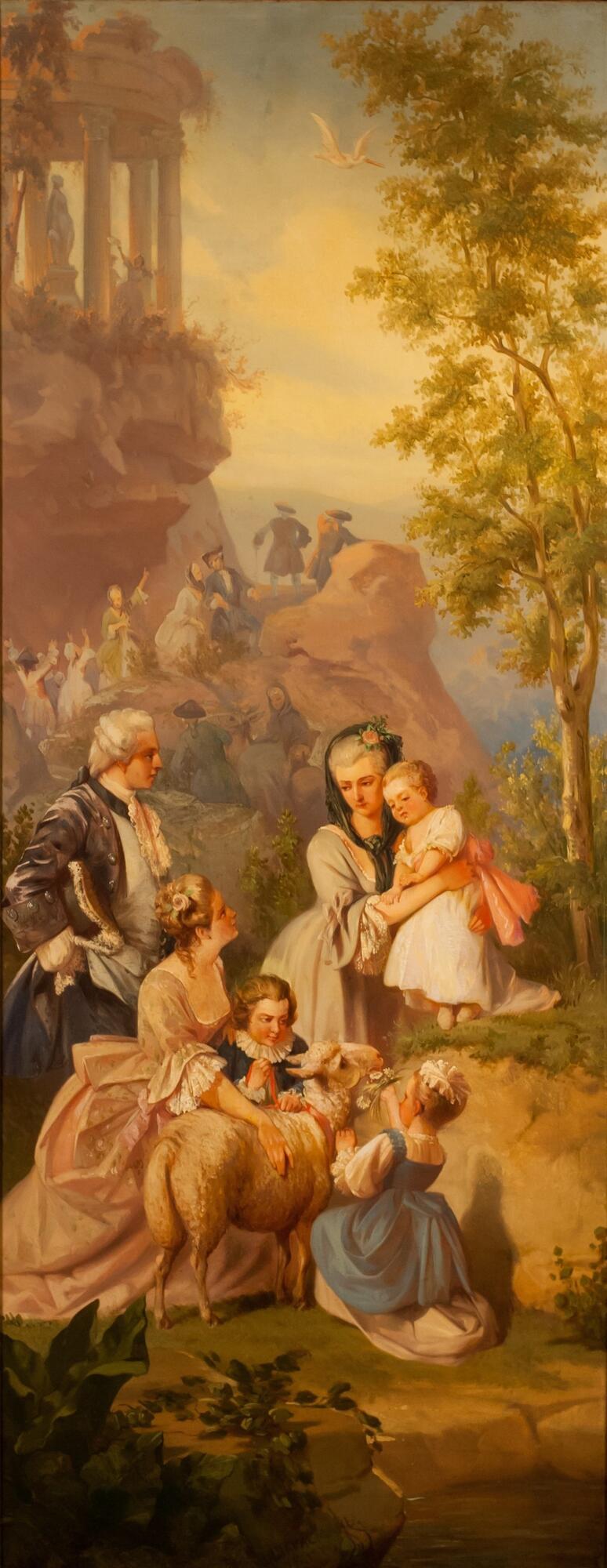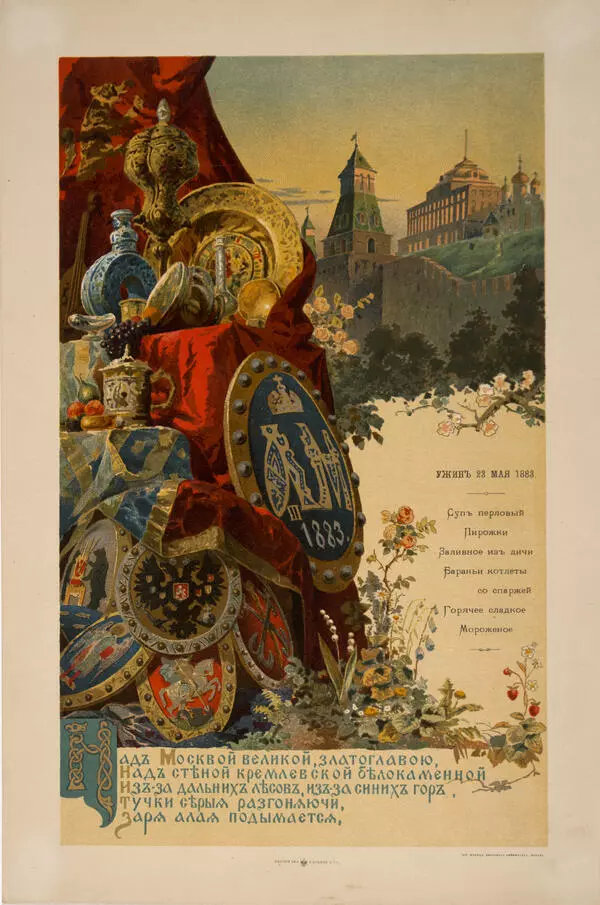The decorative twin panels by Adolph Charlemagne (1826-1901), that have so organically blended into the palace interiors, were commissioned for the Romanov palace in Oreanda. Adolph Charlemagne, the author of these panels, was the grandson of a French sculptor who had come to Russia during the reign of Catherine II. He graduated from the Imperial Academy of Fine Arts and earned professorship for his merits in Russian art. His picture ‘Catherine the Great in the workshop of Étienne Maurice Falconet’ was purchased by Empress Maria Alexandrovna, wife of Alexander II. Since then Charlemagne had been working for the Imperial family, making albums with battle scenes, military parades and maneuvers for Alexander II. In 1873, Charlemagne acquired the tile of ‘Painter of His Imperial Majesty’.
During his voyage to France in 1859-1861 Charlemagne, infatuated with the 18th century French art, studied it thoroughly enough to revive those images in his paintings time and time again. We can see his love for the rococo style in these panels exhibited in Massandra palace. The panels exhibited in the Bedroom reminisce us of 18th century bucolic scenes. This sensation is evoked by superficial narrative, multi-figure composition, elegant albeit artificial postures, and light color palette. The pictures were probably commissioned by Grand Duke Konstantin Nikolaevich, who was the owner of Oreanda palace, in 1870.
One of the panels shows a romanticized version of the Oreanda Arbor on the Tsar’s path. A snow-white semi-rotunda was built there in 1843 to mark the laying of the foundation of a new palace in Oreanda, designed by Andrei Stakenschneider. Eight perfectly shaped classical columns carved of local stone are positioned symmetrically to form a half-circle and can be seen from afar. This Arbor has become one of the best-know symbols of the imperial estate and a popular tourist sight.
Charlemagne’s contemporaries wrote about him: ‘His brush, quill and pencil produced numerous paintings, watercolors and drawings that were done with wonderful dexterity and masterful skill. For more than twenty years his compositions were in high demand with illustrated magazines who replicated them in all manners possible.’
During his voyage to France in 1859-1861 Charlemagne, infatuated with the 18th century French art, studied it thoroughly enough to revive those images in his paintings time and time again. We can see his love for the rococo style in these panels exhibited in Massandra palace. The panels exhibited in the Bedroom reminisce us of 18th century bucolic scenes. This sensation is evoked by superficial narrative, multi-figure composition, elegant albeit artificial postures, and light color palette. The pictures were probably commissioned by Grand Duke Konstantin Nikolaevich, who was the owner of Oreanda palace, in 1870.
One of the panels shows a romanticized version of the Oreanda Arbor on the Tsar’s path. A snow-white semi-rotunda was built there in 1843 to mark the laying of the foundation of a new palace in Oreanda, designed by Andrei Stakenschneider. Eight perfectly shaped classical columns carved of local stone are positioned symmetrically to form a half-circle and can be seen from afar. This Arbor has become one of the best-know symbols of the imperial estate and a popular tourist sight.
Charlemagne’s contemporaries wrote about him: ‘His brush, quill and pencil produced numerous paintings, watercolors and drawings that were done with wonderful dexterity and masterful skill. For more than twenty years his compositions were in high demand with illustrated magazines who replicated them in all manners possible.’






